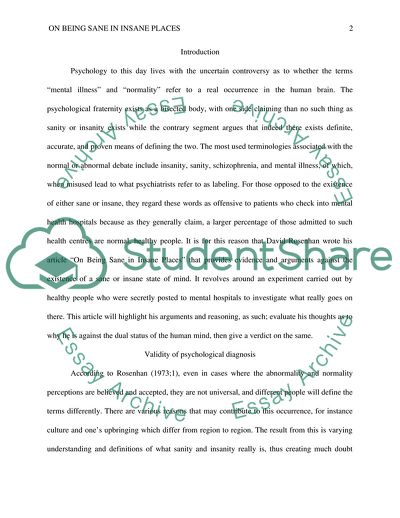Cite this document
(Critical Evaluation of On Being Sane in Insane Places by David Coursework Example | Topics and Well Written Essays - 1750 words, n.d.)
Critical Evaluation of On Being Sane in Insane Places by David Coursework Example | Topics and Well Written Essays - 1750 words. https://studentshare.org/psychology/1811794-critical-evaluation-of-on-being-sane-in-insane-places-by-david-rosenhan-1973
Critical Evaluation of On Being Sane in Insane Places by David Coursework Example | Topics and Well Written Essays - 1750 words. https://studentshare.org/psychology/1811794-critical-evaluation-of-on-being-sane-in-insane-places-by-david-rosenhan-1973
(Critical Evaluation of On Being Sane in Insane Places by David Coursework Example | Topics and Well Written Essays - 1750 Words)
Critical Evaluation of On Being Sane in Insane Places by David Coursework Example | Topics and Well Written Essays - 1750 Words. https://studentshare.org/psychology/1811794-critical-evaluation-of-on-being-sane-in-insane-places-by-david-rosenhan-1973.
Critical Evaluation of On Being Sane in Insane Places by David Coursework Example | Topics and Well Written Essays - 1750 Words. https://studentshare.org/psychology/1811794-critical-evaluation-of-on-being-sane-in-insane-places-by-david-rosenhan-1973.
“Critical Evaluation of On Being Sane in Insane Places by David Coursework Example | Topics and Well Written Essays - 1750 Words”. https://studentshare.org/psychology/1811794-critical-evaluation-of-on-being-sane-in-insane-places-by-david-rosenhan-1973.


